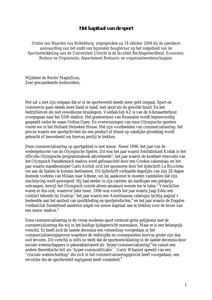Objective: We determined the prevalences of hyperoxemia and excessive oxygen use, and the epidemiology, ventilation characteristics and outcomes associated with hyperoxemia in invasively ventilated patients with coronavirus disease 2019 (COVID–19). Methods: Post hoc analysis of a national, multicentre, observational study in 22 ICUs. Patients were classified in the first two days of invasive ventilation as ‘hyperoxemic’ or ‘normoxemic’. The co–primary endpoints were prevalence of hyperoxemia (PaO2 > 90 mmHg) and prevalence of excessive oxygen use (FiO2 ≥ 60% while PaO2 > 90 mmHg or SpO2 > 92%). Secondary endpoints included ventilator settings and ventilation parameters, duration of ventilation, length of stay (LOS) in ICU and hospital, and mortality in ICU, hospital, and at day 28 and 90. We used propensity matching to control for observed confounding factors that may influence endpoints. Results: Of 851 COVID–19 patients, 225 (26.4%) were classified as hyperoxemic. Excessive oxygen use occurred in 385 (45.2%) patients. Acute respiratory distress syndrome (ARDS) severity was lowest in hyperoxemic patients. Hyperoxemic patients were ventilated with higher positive end–expiratory pressure (PEEP), while rescue therapies for hypoxemia were applied more often in normoxemic patients. Neither in the unmatched nor in the matched analysis were there differences between hyperoxemic and normoxemic patients with regard to any of the clinical outcomes. Conclusion: In this cohort of invasively ventilated COVID–19 patients, hyperoxemia occurred often and so did excessive oxygen use. The main differences between hyperoxemic and normoxemic patients were ARDS severity and use of PEEP. Clinical outcomes were not different between hyperoxemic and normoxemic patients.
DOCUMENT

Excerpt van de oratie van prof. dr. G. van der Laan als lector aan de Fontys hogescholen te Eindhoven (sociaal werk).
DOCUMENT

1e en 2e alinea column: Het is vakantie. De 'Tomtom', ik bedoel hier dan navigatie systemen mee en niet letterlijk producten van het gelijknamige bedrijf, zal dus best veel gebruikt worden in de vele buitenlanden die Nederlanders per auto en fiets plegen te bezoeken. De TomTom is een eigenaardig ding. Aan de ene kant wijst ie de weg. En dat is gemakkelijk. Aan de andere kant wijst ie doorgaans iedereen dezelfde weg met als gevolg dat één weg heel druk is en de alternatieve routes naar het zelfde reisdoel heel leeg. De tomtom creëert daarmee een bias om met zijn allen dezelfde oplossingen langs de zelfde wegen te zoeken. TomTom live verandert daar niets aan.
LINK
1e alinea column: Hoe ziet innovatie in de digital age eruit? Anders dan daarvoor? Is succes van innovatie in de digital age wel voorspelbaar? Bestaat er zoiets als een business logica voor innovatie? Voor echt nieuwe business is dat maar heel beperkt zo. Er zijn geen marktvoorbeelden waar je naar kunt kijken. Concurrenten of collega’s zijn je niet voorgegaan en hoe de klant zal reageren is ook al een verrassing.
LINK
Boekbespeking van Sherrie Turkle, 2011, Alone Together: Why We Expect More from Technology and Less from Each Other. New York: Basic Books. Mails, sms’jes, instant messages, tweets, Skype, voicemails, Facebookberichten – via smartphones en andere apparaten zijn we vrijwel non-stop in contact met vrienden en anderen. Via chatboxen en games ontmoeten we nieuwe vrienden en voor wie graag nog meer contact wil zijn er de elektronische apparaten die graag met ons willen praten. In Amerikaanse verzorgingshuizen kletsen sociable robots lekker aan tegen demente bejaarden. Het Japanse hotel Ohnoya biedt tweepersoonskamers aan voor alleenstaande mannen en hun digitale vriendin, inclusief dubbel gedekte dinertafels. In Nederland (en elders) speelden kinderen reeds eind jaren negentig met robothuisdieren als Furby en Tamagotchi, en laat de nieuwste iPhone-knuffel Talking Carl na een aai over zijn buikje graag merken hoezeer hij is gesteld op zijn relatie met jou.
DOCUMENT

In de themareeks ‘Uit de kunst’ onderzoeken we de waarde van participatie in een artistieke, creatieve wereld voor het HRD-vak. Dit artikel is het resultaat van een reflectieve mailwisseling tussen organisatiefilosoof Mieke Moor en lector Change Management Jacco van Uden. De aanleiding vormde een project waarin Jacco van rol wisselde met kunstenares Mercedes Azpilicueta.
DOCUMENT

Het huidige thema van het Business Research Centre (BRC) van Inholland ‘duurzaam organiseren met een menselijke maat’ dateert uit 2010 en is aan actualisering toe. Dit verkennende onderzoek genereert input voor een thema dat mogelijkheden biedt voor de ontwikkeling van een stevige onderzoeksagenda en tevens ruimte geeft voor crossovers met de andere profilerende thema’s binnen Inholland: creatieve economie, gezonde samenleving en duurzame techniek en groen. Het onderzoek verschaft voorts inzicht in het verbeteren van het beroepenveld, het economisch en business onderwijs in de gehele breedte en de verschillende opleidingen binnen het domein Business, Finance & Law. Om richting te geven aan het onderzoek is de volgende centrale vraag geformuleerd: ’Welke ontwikkelingen in het economische werkveld doen zich voor en wat zijn de gevolgen hiervan voor organisatie en werk?’
DOCUMENT

De ontwikkelingen en veranderingen in de gezondheidszorg maken het noodzakelijk dat verpleegkundigen door middel van bij- en nascholing hun deskundigheid op peil houden. Deskundigheid is de basis waarop herregistratie in het BIG-register zal gaan plaatsvinden. Per 1 januari 2009 moeten zorgverleners na vijf jaar hun deskundigheid aantonen door te voldoen aan de werkervaringseis en, als ze daar niet aan voldoen, de scholingseis1. Deskundigheidsbevordering en Lifelong Learning - levenslang leren - gaan hand in hand. Lifelong Learning is het principe dat mensen gedurende hun hele leven in staat en gemotiveerd zijn om te leren en dat de omgeving daartoe mogelijkheden biedt2, 3. E-learning wordt geassocieerd met leeractiviteiten die plaatsvinden op een zelfgekozen moment waarbij een met een computernetwerk verbonden computer interactief gebruikt wordt. ‘Any place, any time’ is een wezenlijk aspect van e-learning. E-learning is belangrijk voor het levenslang leren van verpleegkundigen.
DOCUMENT

Oratie over het commercialiseringsproces op sportgebied, uitgesproken op 18 oktober 2006 bij de openbare aanvaarding van het ambt van bijzonder hoogleraar op het vakgebied van de Sportontwikkeling aan de Universiteit Utrecht in de faculteit Rechtsgeleerdheid, Economie, Bestuur en Organisatie, departement Bestuurs- en organisatiewetenschappen.
DOCUMENT

Samenvatting: zie publicatie
DOCUMENT
